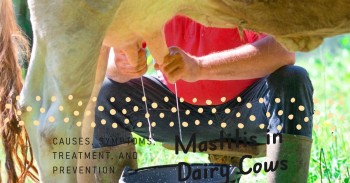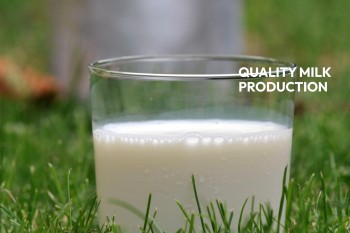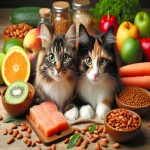Essential Tips for Livestock Care During Floods in Bangladesh 🌧️🐄
Floods are a common natural disaster in Bangladesh, causing widespread disruption and damage to both human life and livestock. For farmers, the welfare of their livestock is crucial, as these animals are not only a source of income but also a vital part of rural livelihoods. Proper care during floods can prevent significant losses and ensure that animals remain healthy and productive even in adverse conditions. This blog post offers essential tips for livestock care during floods, focusing on preparation, management, and recovery.
1. Preparation Before the Floods
1.1. Vaccination and Health Checks 💉 Before the onset of the monsoon season, ensure all your livestock are up-to-date with their vaccinations. Common diseases like foot-and-mouth disease, anthrax, and hemorrhagic septicemia can spread rapidly during floods. Regular health checks should also be conducted to identify any pre-existing conditions that could be exacerbated by the stressful flood conditions.
1.2. Create a Flood Management Plan 📋 Develop a comprehensive flood management plan that includes safe evacuation routes, alternative shelter locations, and a list of emergency contacts. Make sure all family members and farm workers are aware of the plan and their roles during an emergency.
1.3. Stockpile Emergency Supplies 📦 Store sufficient feed, clean water, and medical supplies in a dry, elevated area. Include essential items like waterproof tarpaulins, ropes, and first aid kits. Prepare enough supplies to last at least a few weeks, as floods can disrupt access to markets and veterinary services.
2. During the Floods
2.1. Evacuation and Shelter 🏞️ If your area is prone to severe flooding, consider relocating your livestock to higher ground or a community shelter before the floodwaters rise. Ensure that the shelter is equipped with adequate ventilation, drainage, and space for all animals. Avoid overcrowding, as it can lead to stress and the spread of diseases.
2.2. Water and Feed Management 🌾 Provide clean, uncontaminated water to your livestock. Floodwaters often contain harmful pathogens and chemicals, so it is essential to ensure that the water supply is safe. Use stored feed to avoid contamination from floodwaters. If fresh feed is needed, ensure it is sourced from a safe, non-flooded area.
2.3. Monitor Animal Health 🩺 Keep a close eye on your livestock for signs of illness or distress. Common symptoms during floods include diarrhea, respiratory issues, and lethargy. Immediate veterinary attention may be required to prevent the spread of disease. Isolation of sick animals is crucial to protect the rest of the herd.
3. Post-Flood Recovery
3.1. Assess and Clean the Shelter 🧹 Once the floodwaters recede, thoroughly clean and disinfect the animal shelter to remove any harmful bacteria or debris. Check for any structural damage and make necessary repairs to ensure the safety and comfort of your livestock.
3.2. Gradual Reintroduction to Normalcy 🌞 Reintroduce your animals to their normal routine gradually. Start by providing small, regular meals and gradually increase to their normal diet as their digestive systems recover. Continue to provide clean water and monitor their health closely for any delayed onset of flood-related illnesses.
3.3. Seek Veterinary Assistance 👨⚕️ After the floods, it's crucial to have a veterinarian conduct a thorough health check on all livestock. Even if animals appear healthy, some conditions may take time to manifest. A post-flood vaccination program may also be necessary to protect against diseases that are more prevalent in the aftermath of flooding.
4. Preventive Measures for Future Floods
4.1. Invest in Flood-Resistant Infrastructure 🛠️ Consider investing in flood-resistant infrastructure, such as elevated shelters, proper drainage systems, and flood barriers. These measures can significantly reduce the impact of future floods on your livestock and property.
4.2. Community Collaboration 🤝 Join or establish a community group focused on disaster preparedness. Sharing resources, information, and support with neighboring farmers can be highly beneficial during floods. Community collaboration can also help in accessing government aid and relief programs more effectively.
4.3. Insurance and Financial Planning 💰 Consider livestock insurance as a financial safeguard against flood-related losses. Additionally, maintaining a financial buffer can help you manage the costs associated with flood recovery and prevent long-term economic strain.
Conclusion
Floods are an inevitable challenge for livestock farmers in Bangladesh, but with proper preparation and care, the impact on your animals can be minimized. By following these essential tips, you can protect your livestock from the worst effects of flooding and ensure their continued health and productivity. Remember, proactive planning and community support are key to managing the risks associated with floods.
For more detailed information and guidance on livestock care during floods, visit bdvets.com/blog. Stay informed, stay prepared, and keep your livestock safe! 🐄🌧️
Follow us on social media for more veterinary tips and updates:

















